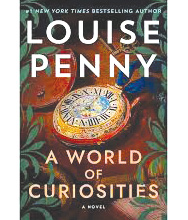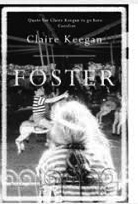Below is Carol Martin’s book review.

A World of Curiosities by Louise Penny. Minotaur Books 2022, 384 pp.
This is the 18th book written by Louis Penny. I have read every one and found them to be wonderfully entertaining. They are all set in Three Pines, which is a small town in Canada. There was one which took place in a Monastery and that was the only one I did not care for. I would love to write just one book, but that requires a talent that I sadly do not have.
The mystery begins when a woman is found dead and floating in a lake. It may well be a murder yet could be suicide. There is a gash on her head, and that might be just from hitting her head while floating along the shoreline. They will have to wait until they have more information. Inspector Gamache will be the chief investigator as he most always is.
Some crime always gets the ball rolling, but it is the characters in Three Pins that make a fun read. The Inspector lives in Three Pines and his second in command Jean Guy is married to his daughter.
Three Pines has the two Bistro owners who serve wonderful food, a bookstore owner, an artist and the very eccentric poet and trash talking Ruth Zardo and her trash talking duck.
I may have reviewed Penny before, but all her books are written to be enjoyed.
Below is Jane Shipp’s Book Review.

FOSTER, by Claire Keegan
This is a book small in size, only 92 pages long, a quick read in a sense–but carrying quite a punch. It is set in Ireland, in a village of sheep farmers, with a young girl as narrator and main character. Her name is never mentioned; she is in effect nameless. Her parents, mired in poverty and unwanted babies, send her to live temporarily with another farming couple in the area while her mother gives birth to the latest addition to the family. In the opening pages of the book she is driven by her ne’er-do-well father and dropped off without explanation.
Our heroine’s foster family is almost exactly the polar opposite of her birth family. She arrives dirty, hungry, bewildered and clearly starved for affection. Her foster parents, the Kinsellas, are hard working, cheerful, loving people, comfortable in a clean home, with a bountiful garden out back. One of the first things the “wee girl” notices is that they sleep in the same bed; she is impressed. She is given a bath, a good scrubbing right down to her fingernails and some boy’s clothes from a drawer. She is able to eat her fill of the good food prepared by Mrs. Kinsella.
John Kinsella, the husband, shows her affection and interest. He teaches her to read and encourages her interest in books. All is well, except we sense there is a secret hidden somewhere in the picture. When the Kinsellas buy her nice girls’ clothing and take her to church, a nosy neighbor spills the beans.
The dialogue in this book is skillfully done, with Irish idioms sprinkled throughout, in an entirely genuine way. The reader can feel the atmosphere and can “know” the characters from their speech, or lack thereof. The contrast between the two families, the biological family and the foster family, is striking and in itself a glimpse of the reality of lives in what seems to be an isolated area of Ireland.
The ending of FOSTER is not a cheerful one, but the reader can’t help feeling that the girl’s brief stint, in what must have felt like heaven to her, will have lasting effect. Love abounds in the conclusion, and indeed throughout the story. This book is one that both warms the heart and tears at the heartstrings; it can be read in a couple of hours, but its effect is long lasting.